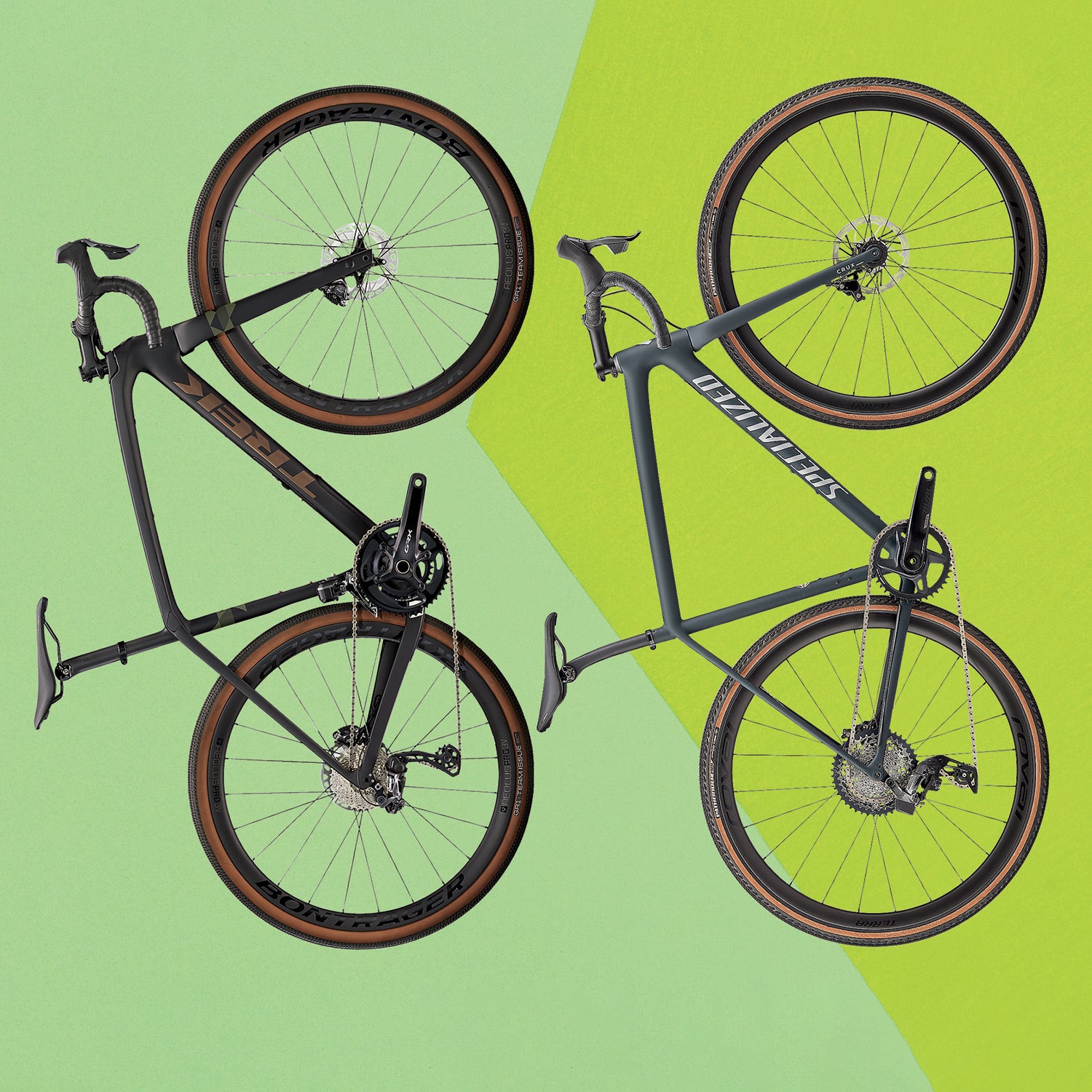As a relatively new creature in the cycling world, gravel bikes are still evolving. Each year brings new innovations to the gravel-cycling scene. The latest generation of gravel bikes are lighter, more capable and—perhaps most important for the average cyclist—more comfortable than ever before. These are the four bikes that won us over with their rough-road performance.
Trek Checkpoint SLR 7 ($8,350)

Trek’s redesigned Checkpoint ticks all the boxes of what a modern gravel bike should be. Think: forgiving handling suited to daylong adventures and a wide range of cargo-carrying options, including bolt-on bags (sold separately) that fit each frame size perfectly. It breaks away from the pack with Trek’s vibration-defeating IsoSpeed system, which increases flex at the top tube so you can remain seated, even on rough surfaces. The result is one of the most comfortable gravel bikes we’ve ever ridden, especially on chunky gravel and washboard. Bonus: the integrated down-tube storage compartment fits a couple spare tubes, tools, a pump, and a rain shell. The combination of that impact-absorbing carbon frame with Shimano’s 2×11 gravel-specific GRX Di2 drivetrain is perfect for endurance riding.
Specialized Crux Expert ($6,200)

Though it’s designed with cyclocross racing in mind, Specialized’s Crux has long been one of the most popular gravel bikes. Its carbon frame is engineered with lessons learned from the development of the world’s lightest production road bike, the Aethos. Translation: it offers a vibration-damping ride that mimics the classic feel of the finest steel and titanium bikes but at a fraction of the weight. The new Expert model features tubeless carbon wheels and SRAM’s fast-shifting electronic Rival eTap AXS 1×12 drivetrain. We’ve ridden every iteration of the Crux since its debut in 2010, and this version carries on its dual-purpose heritage with gusto. It’s light for easy shouldering and nimble enough for tight cyclocross turns, with a velvet-smooth ride that takes the edge off rocky roads.
Giant Revolt Advanced 1 ($4,000)

Many gravel rigs rely on some form of engineered flex to absorb high-frequency chatter before it can lead to muscle fatigue. Here, Giant’s designers did just that, adding a small but noticeable amount of flex to the seatpost and handlebar. This bike also has progressive geometry: a long front center and steep headtube angle that blur the line between gravel bike and cross-country mountain bike, plus a short stem for stability. Still, it offers relatively quick handling, with short, 425-millimeter chainstays (adjustable to 435 millimeters via the flip chip) that keep it snappy. We think the Revolt strikes a great balance between agility and reliability, which makes it great for novices as well as gravel racers seeking confident handling at speed. This is an easy choice for those who want a carbon gravel bike at a price that’s affordable for the class.
Niner RLT 9 SRAM Apex 1 ($2,599)

Niner’s carbon-framed RLT 9 RDO was our top gravel bike in 2020. The RLT 9, with its light and reasonably priced aluminum frame, is an outstanding choice for gravel grinders and adventure cyclists who want to keep tabs on their budgets. We love how much versatility Niner manages to pack into its gravel bikes. The RLT 9 frame sports mounts for water bottles in the main triangle as well as underneath the down tube, plus even more mounts for bolt-on cargo bags. Similarly, the RLT’s carbon fork features additional carry options for water bottles or cargo on each leg. On gravel roads, the ride quality is good, though not quite as smooth as its carbon sibling’s. That’s a trade-off we’re more than willing to make in the name of saving some cash—especially since the RLT 9 can take high-volume 50-millimeter tires to soak up the bumps.


